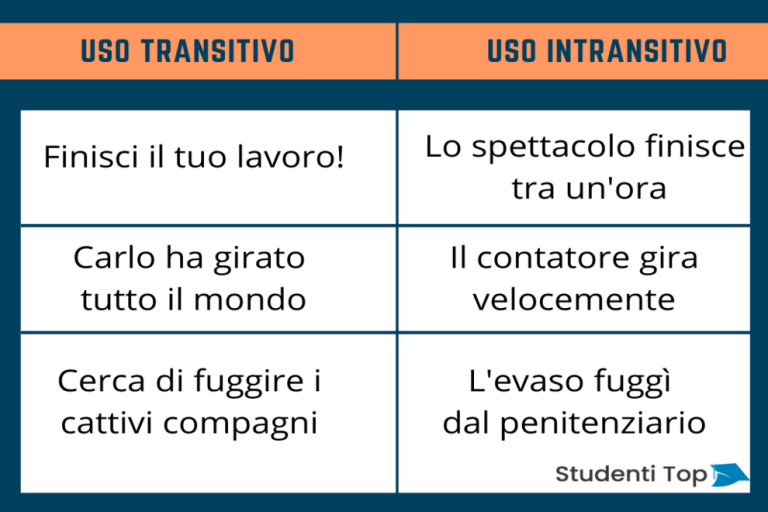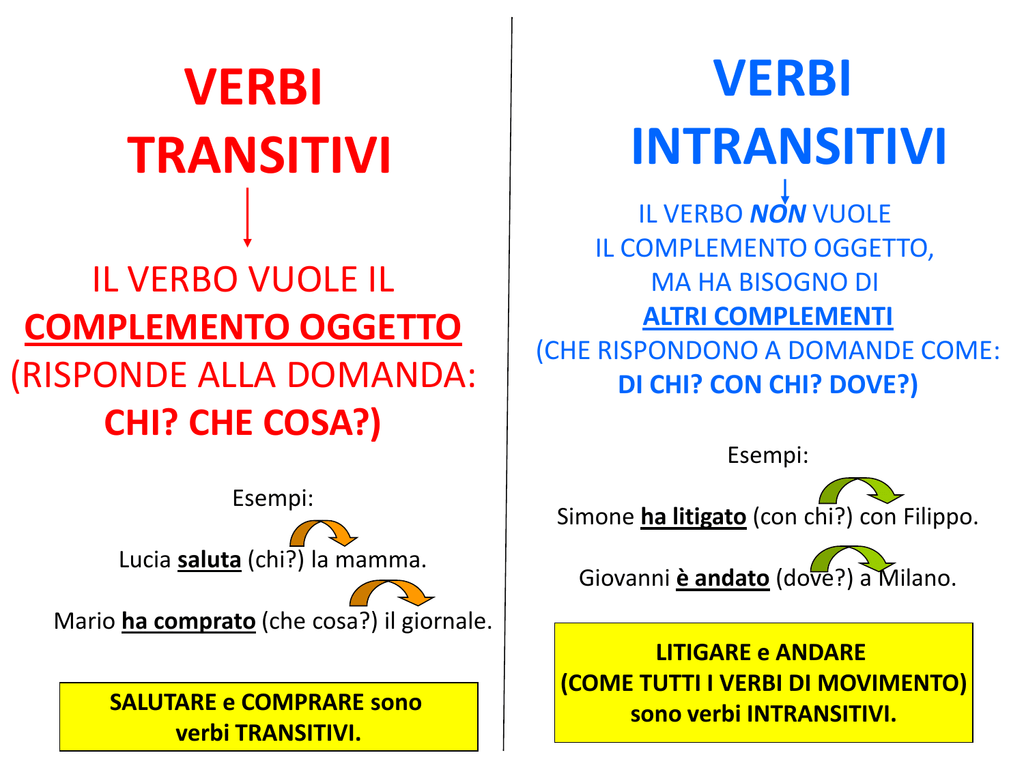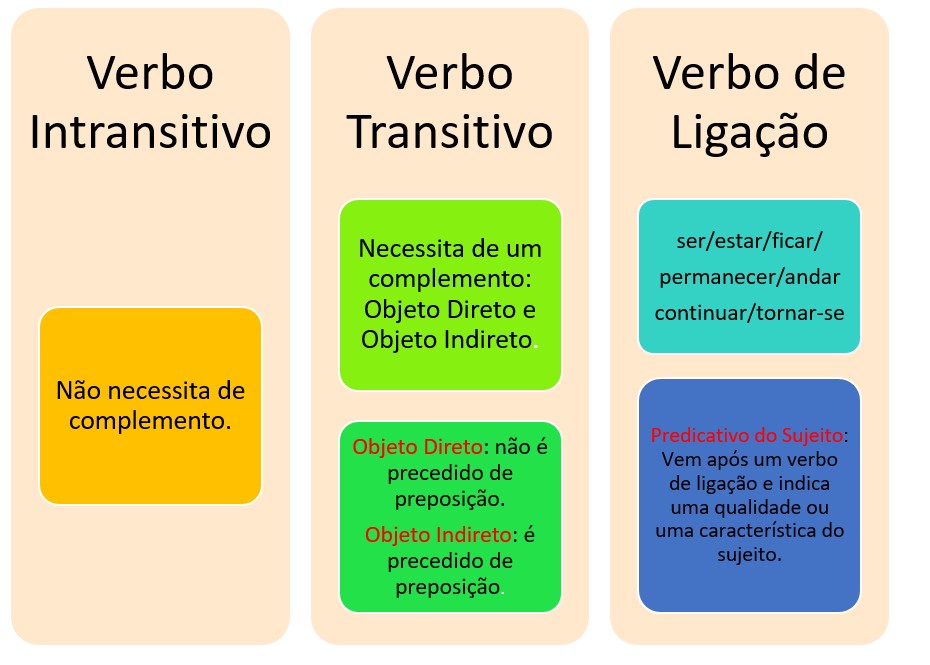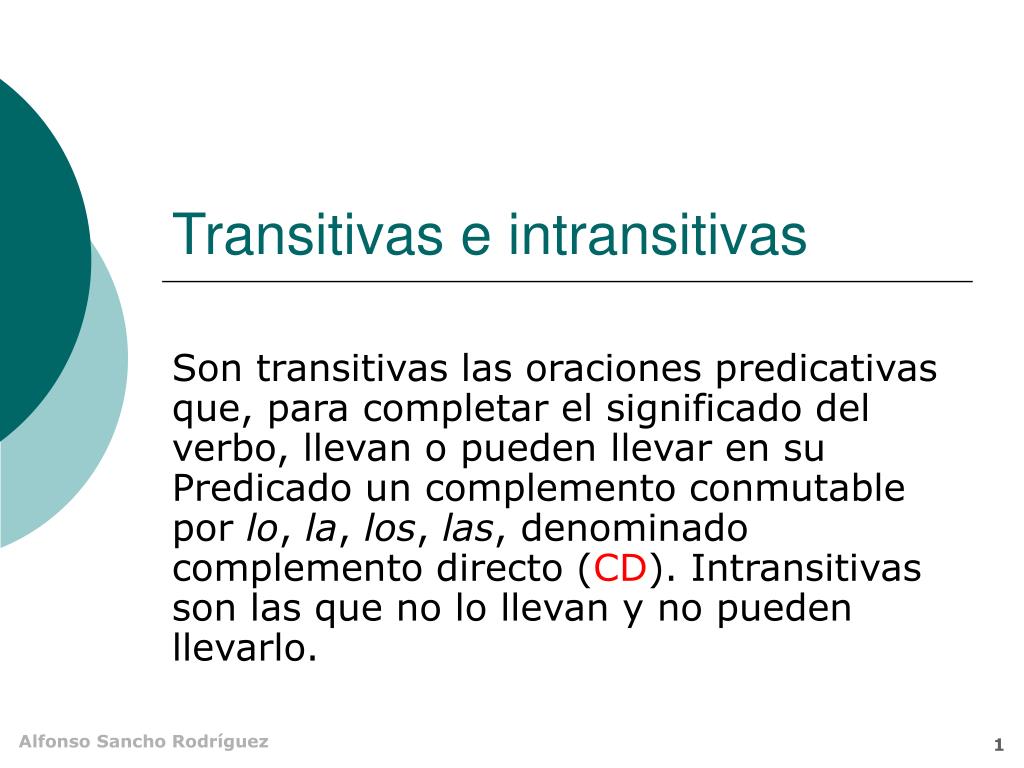
Oraciones Transitivas e Intransitivas (II)
Example 2: The teacher gave me a new notebook. (subject / verb / indirect object / direct object) The teacher gave. The verb 'gave' in the above example is a transitive verb that needs an object. In the second sentence, 'The teacher gave' sounds incomplete without the indirect object and the direct object.

Verbi transitivi e intransitivi cosa sono e come si utilizzano? Studenti Top
Knowing if a verb is transitive or intransitive helps learners to use words correctly and improves grammar accuracy. To understand what transitive and intransitive verbs are, it's first necessary to understand what the object of a verb is. Take a look at these two simple sentences: My mother likes tea. My mother laughed.

Oraciones transitivas e intransitivas YouTube
Transitive AND Intransitive. Some verbs with multiple meanings are transitive or intransitive depending on their usage. The verb 'run' is a good example. When used in the sense of physical exercise, 'run' is intransitive. Helen ran every weekend when she was at college.

Atividade Com Verbo Transitivo E Intransitivo EDUCA
Sometimes the meaning changes depending on whether the verb is transitive or intransitive. He runs along the beach every morning (intransitive: run - the action/sport) He runs a small grocery store (transitive: run = manage) The plane will take off in five minutes. (intransitive: take off = to leave the ground and begin to fly)

Oraciones transitivas e intransitivas YouTube
There's no object.) The children are sleeping. (The subject is 'the children' and the verb is 'are sleeping'. There's no object.) John ate the pizza (transitive). John ate (intransitive). Also, some verbs that have more than one meaning can be transitive or intransitive depending on which meaning is being used.

Happy Reforço Escolar Verbo Transitivo / Intransitivo / Verbo de Ligação
If you are unsure about whether a verb is transitive or intransitive, you can check a dictionary. Most dictionaries, such as the online version of Merriam Webster, indicate whether a verb, and each definition of the verb, is transitive or intransitive. Whether a verb is transitive or intransitive may depend on whether the verb has multiple.

Verbo transitivo e intransitivo... YouTube
Therefore, verbs such as to be, to feel, and to grow and all their forms cannot be transitive verbs, which will be under the intransitive verbs section. Second, a transitive verb always needs to relate to the object in a sentence. To understand what that means, let's break down the fundamentals of sentence structure.

Verbo transitivo versus verbo intransitivo Qual a diferena
The BE verb is not transitive or intransitive. It is called a linking verb. Instead of following the subject + verb + object format, sentences with linking verbs follow this format: The man is a doctor. [subject] + [verb] + [complement] Other linking verbs include appear, become, feel, grow, look, smell, sound, taste.

Verbos transitivos e intransitivos Ejemplos
Transitive: Sally sent the birthday gift yesterday. Verb: sent Direct Object: birthday gift Intransitive: Sally went to Jack's birthday party. Verb: went Object: none How to identify transitive and intransitive verbs. Looking at the object of the sentence is the best way to identify if the verb in a sentence is transitive or intransitive.

PPT Transitivas e intransitivas PowerPoint Presentation ID192920
Transitive verbs are verbs that use a direct object. Intransitive verbs are verbs that do not use a direct object. A verb can be described as transitive or intransitive based on whether or not it requires an object to express a complete thought. A transitive verb is one that makes sense only if it exerts its action on an object.

Verbos TRANSITIVOS e INTRANSITIVOS YouTube
Every verb can be either transitive or intransitive, depending on the context. A transitive verb is one that takes an object to complete its meaning. Take, for instance: Study French. Throw the boomerang. In the case of intransitive verbs, the absence of an object is not required. Take, for instance: Run to the church. Come on time. Go to the.

Atividade Verbo Transitivo E Intransitivo EDUCA
The future tense is usually formed with will and an infinitive. It's used to predict a future event or condition, as in the following sentences with their future tense verbs in bold:. The grammarians will pressure you to yodel with them too.. In the first person (that is, when the speaker or writer is using I) and especially in 19th century British novels, shall is sometimes used instead of will:

Verbo transitivo versus verbo intransitivo Qual a diferena
The way you use a verb makes all the difference in determining if it is a transitive or intransitive verb. Learn what these terms mean, with examples, here.

Verbo transitivo versus verbo intransitivo Qual a diferena
Verbs can either be transitive or intransitive. Transitive verbs must have a direct object to complete the thought. Intransitive verbs do not have a direct o.

Examples Of Transitive And Intransitive Verbs Exercises With Answers
They mean: "verb transitive" or "verb intransitive.". At Dictionary.com, you'll find this technique: "verb (used with object)" and "verb (used without object).". The first, of course, means "transitive verb," the second "intransitive verb.". Let's look at a few verbs that are always intransitive. Try out the trick.

TOMi.digital ORACIONES TRANSITIVAS E INTRANSITIVAS
An intransitive verb is a verb that doesn't require a direct object (i.e., a noun, pronoun or noun phrase) to indicate the person or thing acted upon. For example, the verb "yawn" is intransitive because it's not possible to "yawn" something. The opposite is a transitive verb, which must take a direct object. For example, a sentence.